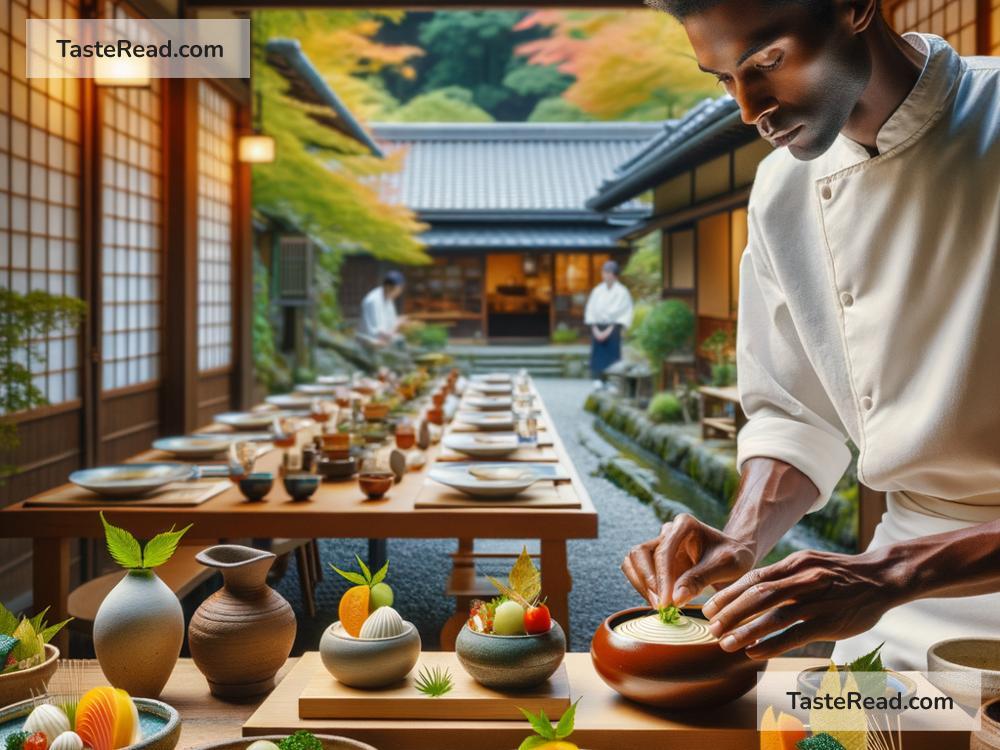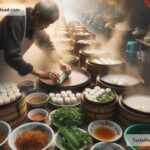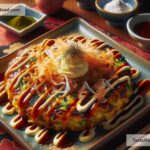Exploring the Subtle Art of Japanese Kaiseki Plating in Kyoto, Japan
Japan is known for its rich culture, fascinating traditions, and mouthwatering cuisine. Of all its culinary treasures, Kaiseki stands out as the crown jewel. A multi-course meal that originates from Kyoto, Kaiseki has earned international fame for its delicate presentation and connection to the seasons. If you have ever wondered how food can look like art, exploring Kaiseki in Kyoto is an experience that will leave you speechless—and hungry for more!
What Is Kaiseki?
Kaiseki is not just about eating; it’s about experiencing harmony between food, nature, and tradition. Originally, Kaiseki was served as part of Japanese tea ceremonies. Over time, it evolved into an elaborate dining style with multiple small dishes that showcase seasonal ingredients. Kaiseki meals typically include dishes like soup, sashimi, grilled items, steamed dishes, and dessert. Each dish is carefully prepared and plated in a way that pleases both the eyes and the taste buds.
But what truly sets Kaiseki apart is its subtle art of plating. In Kaiseki, presentation is just as important as flavor. The chefs don’t just put food on plates—they create edible works of art that reflect the beauty of Kyoto’s changing seasons.
Kaiseki and the Beauty of Kyoto’s Seasons
Kyoto is famous for its distinct seasons: cherry blossoms in spring, lush greenery in summer, vibrant autumn leaves, and serene snow-covered landscapes in winter. Kaiseki mirrors these natural changes. For example, in spring, delicate pink and green elements might be used to reflect blooming flowers. In autumn, dishes may include ingredients like mushrooms and chestnuts, served with plate designs that mimic fiery red and orange leaves.
The plates and bowls used in Kaiseki are carefully chosen to enhance this seasonal theme. Japanese pottery, lacquerware, and bamboo serving trays often complement the dishes, tying the meal together with perfection. Even the colors and shapes of the tableware play a role in creating a harmonious experience.
The Philosophy Behind Kaiseki Plating
At first glance, Kaiseki plating might seem overly detailed, but every element has purpose and meaning. Kaiseki chefs follow a philosophy called “wabi-sabi,” which is the appreciation of simplicity, imperfection, and nature. This means that dishes often feature asymmetrical designs, natural textures, and earthy colors rather than a polished or overly symmetrical look.
Another important concept in Kaiseki is “ma,” which refers to the emptiness or negative space in a design. While many cuisines use plating to pack the plate full of food, Kaiseki leaves space to highlight the beauty of each ingredient and create a sense of balance. This minimal approach allows you to focus fully on the artistry and craftsmanship behind the dish.
Where to Experience Kaiseki in Kyoto
Kyoto is home to countless Kaiseki restaurants, ranging from humble spots to exclusive dining establishments. Some of the most famous Kaiseki restaurants can cost a lot, but there are options to suit all budgets.
One iconic restaurant is Kikunoi, which has earned three Michelin stars for its exquisite Kaiseki meals. At Kikunoi, the chef’s creativity shines through in every dish, leaving you with not just a meal but an unforgettable memory of Kyoto’s culinary excellence.
For travelers seeking a more casual Kaiseki experience, Kyoto’s Nishijin district offers several smaller restaurants with authentic meals at lower prices. Each place has its unique touch, but the core essence of Kaiseki—the seasonal flavors and stunning plating—is always present.
What to Expect in a Kaiseki Meal
A Kaiseki meal is a wonderful journey that lasts for hours. When the first dish is served, you may notice that the plating looks almost too beautiful to eat. Chefs pay attention to every shade of color, the arrangement of ingredients, and even the height of the dishes. Some plates may feature edible flowers or decorations carved from vegetables, adding an extra layer of artistry.
As you move through each course, you’ll experience a wide variety of textures and flavors. Some dishes will be light and refreshing, while others might be warm and comforting. The meal feels perfectly balanced, allowing you to savor every bite without feeling overwhelmed.
Drinks are also a part of this elegant dining experience. Traditional Japanese sake pairs beautifully with Kaiseki, and some restaurants may offer seasonal tea to match the theme of the meal.
Why Kaiseki Matters
Kaiseki is more than just food—it’s the embodiment of Japanese aesthetics, mindfulness, and dedication to craft. Chefs spend years mastering the skills needed to create a true Kaiseki experience, and their passion is reflected in every detail, from the slicing of fish to the arrangement of vegetables.
Visiting Kyoto and experiencing Kaiseki is unlike any other meal you’ve had before. It’s a moment to slow down, appreciate the artistry on your plate, and connect with the seasons in a meaningful way.
Final Thoughts
Whether you’re a food lover or an admirer of art, Kaiseki has something to offer. Kyoto, the birthplace of Kaiseki, is the perfect place to explore this beautiful tradition. Each meal is like a painting, crafted with care and respect for nature. If you find yourself in Kyoto, don’t miss the chance to experience Kaiseki—it’s not just a meal, but an unforgettable journey through the seasons and the soul of Japanese culture.


